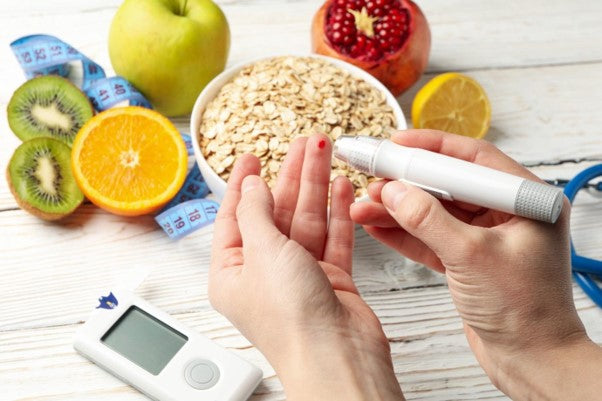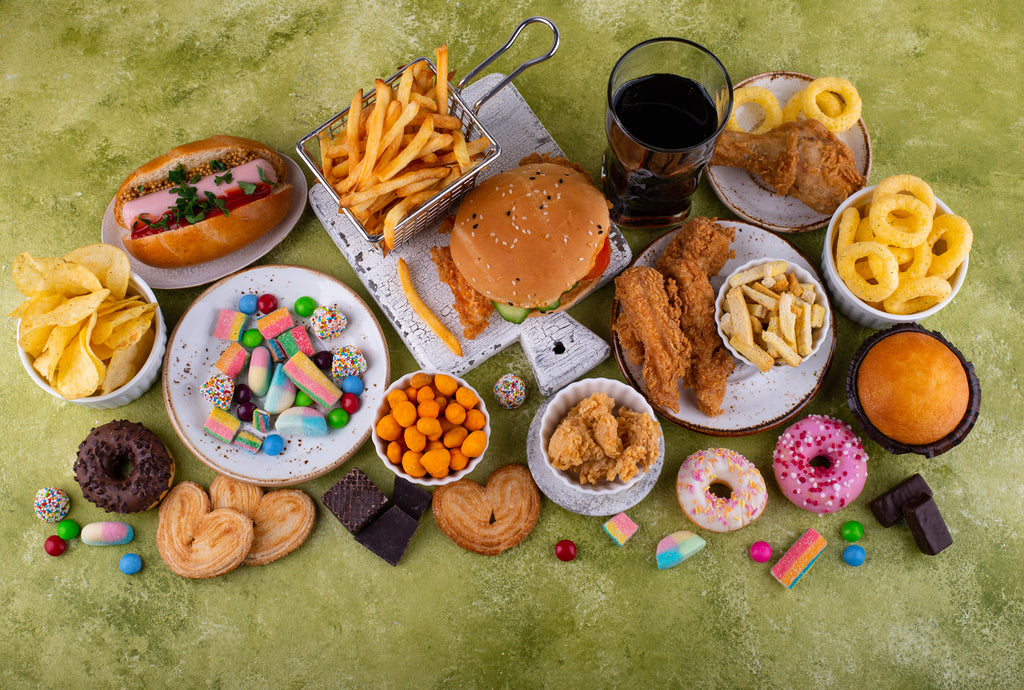Understanding Prediabetes and Insulin Resistance: A Comprehensive Guide

A Deeper Look at Insulin Resistance and Prediabetes
Insulin resistance and prediabetes are closely entwined, with both disorders indicating a reduced effectiveness of the body's insulin response[1]. As the prevalence of these conditions increases worldwide, they justifiably have become the focal point of our health consciousness due to their potential significant impact on our lives. This comprehensive guide aims to elucidate these conditions, their correlation, their extensive health implications, and the ways to counteract them.
Insulin resistance is a state where the body's cells gradually lose their sensitivity to insulin, a hormone that directs glucose into our cells for use[2]. Prediabetes, conversely, is a pre-diabetic condition where blood sugar levels are elevated, yet not high enough to warrant a diagnosis of full-blown diabetes[3]. Worryingly, prediabetes often accompanies or follows insulin resistance, serving as a harbinger for the onset of type 2 diabetes among several other potential health complications[4].
Understanding the intricacies of these terms, interpreting their implications, revealing their shared roots, and charting a path of management is a vital step - not only for those already encountering these conditions, but also for those at risk.

Understanding Insulin's Role
Insulin, a hormone produced in the pancreas, essentially guides glucose from your bloodstream into cells within your muscles, fat, and liver[5]. This glucose is vital for cellular energy production. Dietary intake and the liver's natural glucose production both contribute to your body's glucose levels, which are carefully regulated by insulin to maintain equilibrium.
The Phenomenon of Insulin Resistance
Insulin resistance is a condition in which the body's cells, particularly those in muscles, fat, and liver, lose sensitivity to insulin, leading to decreased glucose absorption[6]. This phenomenon is much like cells being 'full' of glucose—there's a limit to how much they can hold at any given time. Once this limit is reached, the insulin receptors on the cell membranes become insensitive, preventing further glucose intake.
Think of this situation as a room filling up to its capacity. Suppose the room represents a cell and people the glucose. Once the room is filled to maximum capacity, people (glucose) start accumulating outside, needing greater force (insulin) to get inside.
To overcome this resistance, the body responds by increasing the production of insulin, much like a pressure exerted to push more people into an already crowded room. This results in elevated insulin levels as the pancreas works harder to drive more glucose into the cells [6].
By consuming fewer carbohydrates and maintaining a balanced diet, we can manage glucose intake, thereby reducing the demand for insulin and potentially easing insulin resistance.
The Condition of Prediabetes
Prediabetes generally emerges in individuals who are already experiencing insulin resistance, or in those with insufficient insulin production to regulate blood glucose levels optimally. Without adequate insulin, residual glucose remains trapped in your bloodstream, incrementally increasing the risk for Type-2 diabetes[7].

Contributing Factors to Insulin Resistance and Prediabetes
Specific genetic or lifestyle risks increase the likelihood of insulin resistance or prediabetes, including excess weight or obesity, older age), having immediate relatives with diabetes, an inactive lifestyle, being of certain ethnic backgrounds, and having certain health conditions or histories, like high blood pressure or heart disease[8].
Research primarily links excessive carbohydrate intake[9], excess weight, especially abdominal (visceral) fat, and sedentary lifestyle habits as the main culprits. Chronically elevated intake of omega-6 oils, as commonly found in cooking oils used in many restaurants, can also contribute to insulin resistance owing to their association with hyperinsulinemia[10]. This highlights the importance of diet, in particular, the type of cooking oils in the management of these conditions.
Persistent inflammation, often associated with unfavourable substances produced by excess belly fat, also contribute to developing insulin resistance and disorders like Type-2 diabetes[11].
Spotting Insulin Resistance and Prediabetes
Insulin resistance and prediabetes rarely present symptoms. However, some people with prediabetes may notice skin darkening in the armpit or back and sides of the neck or small skin growths (skin tags) in these areas.
Physicians often utilise blood tests like the fasting plasma glucose (FPG) test or the A1C test to diagnose prediabetes. The A1C test informs your average blood glucose over the past three months by measuring the glucose attached to red blood cells, whereas the FPG and the slightly less common oral glucose tolerance test (OGTT) measure your blood glucose level during the test.
Actionable Steps for Lifestyle Changes
To take a more proactive approach towards combating insulin resistance and prediabetes, consider implementing the following specific nutrition and exercise strategies in your daily routine:
-
Adopt a Ketogenic Diet: The first step is to modify your diet. A ketogenic diet, characterised by low carbohydrate and high fat intake, can be especially beneficial in managing and potentially reversing insulin resistance. Make sure to consult a healthcare professional before embracing any significant dietary adjustments.
-
Increase physical activity: Aim for at least 150 minutes of moderate-intensity aerobic activity or 75 minutes of vigorous-intensity aerobic activity per week. Incorporate strength training exercises, such as resistance bands or weightlifting, at least twice per week to complement cardiovascular workouts.
-
Adopt a balanced diet: Emphasize consuming nutrient-dense foods such as fruits, vegetables, whole grains, lean proteins, healthy fats, and low-fat dairy products. Limit processed foods, added sugars, saturated and trans fats, and excessive sodium intake.
-
Maintain portion control: Be mindful of portion sizes and avoid overeating. Using portion control tools can help create balanced meals and ensure you're eating proper proportions from each food group.
-
Focus on high-fibre foods: Include foods rich in fibber, such as legumes, whole grains, fruits, and vegetables, as they can help to regulate blood sugar levels and promote satiety.
-
Stay hydrated: Drink plenty of water throughout the day, and limit sugary beverages and alcohol, which can contribute to weight gain and elevated blood sugar levels.
-
Manage stress: Adopt stress-reduction techniques, such as yoga, meditation, or deep breathing exercises, as chronic stress may contribute to insulin resistance.
- Monitor progress: Regularly track your blood sugar levels, weight, and physical activity achievements to stay accountable and adjust your lifestyle modifications as needed.

Conclusion: Conquering Insulin Resistance and Prediabetes
Physical activity, weight loss (if needed), and lifestyle changes bolster the body’s insulin response and can potentially reverse insulin resistance and prevent Type-2 diabetes in individuals with prediabetes.
Lifestyle changes, as a part of a comprehensive plan tracked by healthcare professionals and supported by friends and family, can provide the tools necessary to battle insulin resistance and prediabetes.
References:
- Metabolic Syndrome: Insulin Resistance and Prediabetes - PubMed.
- Insulin Resistance - PubMed.
- Prediabetes - National Library of Medicine
- Diagnosis and Management of Prediabetes: A Review - PubMed.
- Insulin and Insulin Resistance - PubMed.
- Insulin signaling in the pancreatic beta-cell - PubMed.
- Pathophysiology of Type 2 Diabetes Mellitus - PubMed.
- Insulin Resistance & Prediabetes - National Institute of Diabetes and Digestive and Kidney Diseases.
- Carbohydrates and insulin resistance in clinical nutrition - PubMed.
- Associations between omega-6 polyunsaturated fatty acids, hyperinsulinemia and incident diabetes by race/ethnicity - PubMed.
- Inflammation and Insulin Resistance - PubMed.
- Adipose Inflammation, Insulin Resistance, and Cardiovascular Disease - PubMed.
